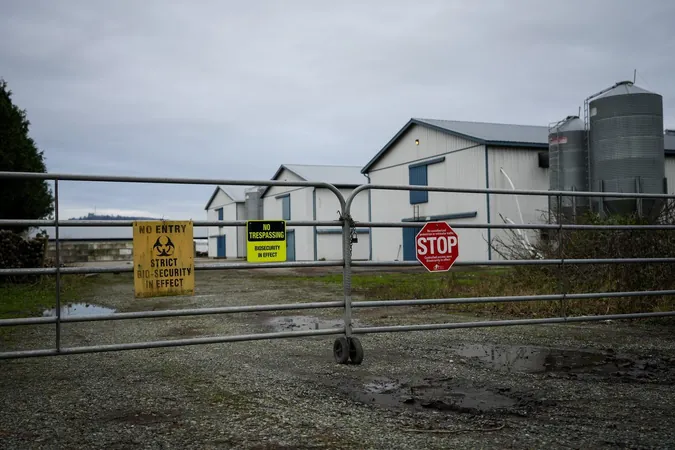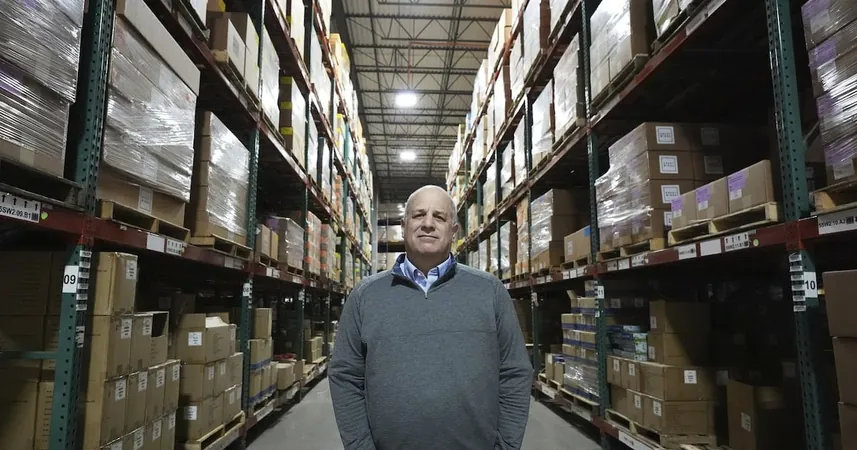
Avian Flu Devastation: British Columbia Farmers Face Uncertainty After Losing 8.7 Million Birds
2025-04-06
Author: Noah
Introduction
As British Columbia grapples with the aftermath of a devastating avian flu outbreak, farmers are left to tally the staggering losses that have impacted their livelihoods over the past three years. More than 8.7 million birds, including commercial and backyard flocks, have been culled in the province alone, accounting for over half of Canada's total cull of 14.5 million birds.
Current Situation
Despite a temporary lull in new infections, farmers are bracing for the next wave of migratory wild birds, which has experts concerned about what the future may hold. Ray Nickel, a farmer in Abbotsford, experienced firsthand the catastrophic effects of the highly pathogenic H5N1 strain when he had to cull 60,000 chickens and an entire flock of 9,000 turkeys in 2022 and 2023, respectively. "The uncertainty weighs heavily on us," he shared. "The anxiety and stress surrounding these recurring events have become a constant part of our lives."
Impact of Outbreaks
Since the first detection of the virus in April 2022, B.C. farmers have had to implement "infection protocols" on a staggering 239 occasions, though the Canadian Food Inspection Agency (CFIA) reports that only six premises are currently infected. Nickel, who also holds a leadership position at the BC Chicken Marketing Board, expressed a mix of relief and apprehension as he noted the absence of new infections since January 11. "While the current calm brings us some relief, the fear of the next outbreak looms large," he said.
Expert Insights
Veterinary experts point out that further research is necessary to fully understand how the disease spreads among flocks. Troy Bourque, a specialist with the CFIA, highlighted the ongoing challenge as the virus continues to circulate among wild bird populations. "With each wave of outbreaks occurring primarily during migration seasons, our poultry industry remains at a heightened risk," he added.
Migratory Patterns
Research indicates that fall migration periods tend to lead to significant outbreaks, as birds often linger in areas like B.C.’s Fraser Valley. Chief Veterinarian Teresa Burns noted that while the province has avoided infections during the spring in recent years, the risk remains real: "Influenza viruses, including H5N1, mutate over time, and we hope that wild birds may eventually develop immunity."
Broader Implications
The implications of the ongoing avian flu crisis extend beyond the poultry industry. Fears of human transmission persist, especially after Canada recorded its first domestically acquired case of bird flu in November 2024. Authorities remain vigilant as they monitor the situation, prioritizing high-risk individuals for vaccination.
Government Response
In response to the crisis, the federal government has procured 500,000 doses of a bird flu vaccine to protect farm workers and others exposed to infected populations. "It's critical we ensure the safety of our poultry industry," Bourque stated. "Proper handling of poultry remains safe, and there is no risk from consuming poultry or eggs."
Farmers' Challenges
Farmers remain vigilant in their biosecurity measures, but when outbreaks occur, containment procedures are set in motion: the CFIA mandates reporting suspected infections, quarantining affected farms, and destroying infected animals. Nickel recounted the emotional and financial toll the past few years have taken, stating that disinfection efforts alone cost him over $2,000 after having to cull his flock.
Conclusion
The resilience of B.C. farmers is being tested, but they continue to fight through the uncertainty that lies ahead. As migration seasons approach once more, both farmers and researchers are Warily watching, hoping for a break in this relentless cycle of avian flu outbreaks.









 Brasil (PT)
Brasil (PT)
 Canada (EN)
Canada (EN)
 Chile (ES)
Chile (ES)
 Česko (CS)
Česko (CS)
 대한민국 (KO)
대한민국 (KO)
 España (ES)
España (ES)
 France (FR)
France (FR)
 Hong Kong (EN)
Hong Kong (EN)
 Italia (IT)
Italia (IT)
 日本 (JA)
日本 (JA)
 Magyarország (HU)
Magyarország (HU)
 Norge (NO)
Norge (NO)
 Polska (PL)
Polska (PL)
 Schweiz (DE)
Schweiz (DE)
 Singapore (EN)
Singapore (EN)
 Sverige (SV)
Sverige (SV)
 Suomi (FI)
Suomi (FI)
 Türkiye (TR)
Türkiye (TR)
 الإمارات العربية المتحدة (AR)
الإمارات العربية المتحدة (AR)